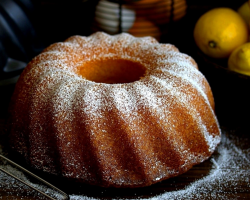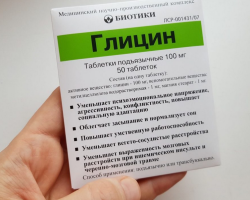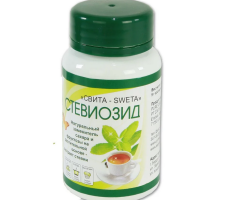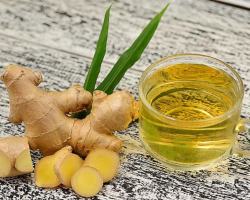From the article you will learn about pests of plants and mushrooms - mushroom mosquitoes.
Content
- What the mosquito mosquito looks like: what does it look like, stages of development, photo larvae on indoor plants
- Mushroom mosquitoes in mushrooms, indoor colors, on seedlings: what's the danger?
- Differences of mushroom mosquitoes and fruit midges
- How to remove mosquito mosquitoes, how to get rid of - effective means of struggle: insecticides, drugs
- How can you deal with mushroom mosquitoes without harmful chemistry?
- Prevention measures against mushroom mosquitoes
- Video: How to destroy soil mosquitoes?
- Video: I got rid of mushroom mosquitoes forever. 100% result!
- Video: mushroom mosquitoes or soil flies, struggle and prevention
Unpleasant insects under the strange name "Mushroom mosquitoes" Often appear when growing indoor colors and vegetable seedlings. Their scientific name scecialids, Latin name Sciaridae. Mosquitoes belong to the detachment of double -winged Diptera And they have a thousand varieties.
Read on our website another article on the topic: "Nitroammofosk Fertilizer". You will learn about the use in the garden for cucumbers, tomatoes, peppers, strawberries, grapes, seedlings, indoor flowers, trees, and you will also find instructions for use, reviews.
For humans, mushroom mosquitoes do not pose any danger. Their goal is the roots of flowers and their leaves. Cocialides affect the root system of plants, which leads to their wilting. How to deal with these insects? This is described in the article. Read further.
What the mosquito mosquito looks like: what does it look like, stages of development, photo larvae on indoor plants
It is scientifically proven that mushroom mosquitoes or socialides appeared, more than a million years ago. All of them are small in size and have a species similarity. In addition to thousands of studies studied, there are about 20 thousand unexplored. You can distinguish species only with a large increase. What do they look like?
- Adult sociatures have an oblong body of dark color, the length of which can be within the range from 0.5 to 3 millimeters.
- At least six long and thin legs and two transparent dark wings are attached to the body.
- The head is small, with antennae.
- The mouth is adapted to suck food from plants. Almost do not fly, more often move jumping.
Here are a photo of an adult insect and larvae on indoor plants:


Stages of development:
- Adult socialide lives everything 7 days.
- During this time, the female puts off in moist soil order 300 eggs, from which white transparent larvae with a black shiny head appear. They are much larger in size than adult insects.
- Their length reaches from 8 to 10 millimeters. There are no legs. Adults come out of the larvae of everything after 4-6 days.
First were found on mushroom plantations. Hence their name. In nature, the sociatures live in rotting wood, in places of accumulation of garbage. In personal farms, they are most often seen in greenhouses and pots of indoor plants.
Mushroom mosquitoes in mushrooms, indoor colors, on seedlings: what's the danger?
Both adults and larvae damage mushrooms, sucking juice from them. At the same time, the mushrooms themselves turn into a sponge. Mushroom mosquitoes in indoor colors, on seedlings - what's the danger?
- On indoor flowers or other plants growing in greenhouses, on wet loose soil, females lay eggs in the immediate vicinity of the roots.
- The hatched larvae begin to eat intensely, while damaging the upper layers of the crust of the roots.
- The absorption process is disturbed, and the plant gradually fades.
The first signs of plant damage to mushroom mosquitoes are bleaching and yellowing of the leaves. Glorious caterpillars, making moves in the bark, often make a fungal infection. The moisture content of the soil contributes to its rapid spread. If the seedlings are very small, and there are few organic inclusions in the ground, the larvae with pleasure eat green leaves, and sometimes the whole plant is entirely. Therefore, seedlings quickly die.
Adult insects do not feed on plant juices. They jump from one plant to another, pick up the spores of fungi, and other infectious materials on the legs: rot, mold and web. So adult scigers very quickly spread plant diseases. Especially dangerous are adult sociatures for mushrooms, to which they carry specific fungal diseases.
Differences of mushroom mosquitoes and fruit midges

In fact, the sciatica are very similar to fruit midges. Although, unlike mushroom mosquitoes, the fruit flusp of Drosophila does not harm plants. She also lays eggs in wet ground in flower pots. In contrast to the Socialids, after healing, the larvae of fruit midges do not damage the plant, and do not deepen into the soil.
The fruit flush has severe differences from the meaner:
- Drosophila Smaller, has a small dark elongated body with a large head on which huge eyes are located.
- They are sometimes painted red. This can be seen in the picture above.
- Drosophilas are absent.
- Recall that the sociature has a more elongated body with a small black head, small eyes and a black mustache, consisting of separate segments. The legs are thinner and longer.
In the middle lane, the most dangerous meanings of the species Bradisia, Sciaterand Lycorella. The most active period of insect propagation falls on late autumn. During this period, the soil is still watered, and evaporation is much slower.
The accelerated reproduction of mushroom mosquitoes contribute to:
- Abundant moisture
- Lack of drainage layer and holes in pots and containers for flowers
- The use of drunken tea leaves as mulch
- The presence of deposits on the moss sides or lime
- Water has been in the pallet for too long
In order to decide on the most effective ways to combat harmful insects, it is necessary to develop an indestructible rule for yourself: every new plant that enters the house should go two -week quarantine. The plant is carefully examined and preferably transplanted into a new pot. Only after that, the pot with the plant can be brought into the room where home flowers are located. Be sure to redraw all the possible ways to get the pests into the room or greenhouse: take care of the safety of ventilation moves, the absence of stale fruits or flowers brought, for example, from the forest.
The measures of struggle are described below. Read further.
How to remove mosquito mosquitoes, how to get rid of - effective means of struggle: insecticides, drugs

If you find in a pot with a new flower of adult insects, you should look closely - what midges settled in your farm. If pests were found in the pot, they can be destroyed by one of the repellents like "Dichlophos", "Rade"or "Raptor". And then it is necessary to conduct the following:
- Review the soil for the presence of larvae.
- They are clearly visible if the earth is slightly picking. She will become loose.
- Larvae are visible as shiny intersperses under the light. Just take them out of the ground.
What else can be removed by mosquitoes, how to get rid of? Other different effective means of struggle are also used to destroy them. Here are popular insecticides, drugs, methods:
- Chemicals - Insecticides of the type "Actars" or "Aktellik". The breeding method is indicated on the packaging.
- Mechanical method - Removing the larvae manually. Patience and steam, three days will be required. The larvae are dark and small, merge with the soil. But for two or three tricks, larvae can either be selected or crushed.
It should be remembered: Treatment with toxic drugs "Dichlophos", "Raptor", "Aktara", must be carried out in personal protective equipment: masks, gloves and glasses. Do not eat food with dirty hands!
Experienced gardeners often carry out mulching seedlings of natural diatomite flour. It has insecticidal and adsorption properties, and is part of insecticides. As a means of combating mushroom mosquito larvae, soil insecticides in the form of granules are used: "Thunder-2" or "Bazudin". Bring it in two ways:
- They scatter several granules on the surface of the soil in a flower pot, and then mix with the ground so that the granules are covered. Pour the flower, water flows will erode granules and destroy insect larvae.
- The second method of introduction - remove the soil layer to the depth 2-3 centimeters And mix it with granules.
In addition to these methods of combating detected pests, there are slightly more gentle ones. Read further.
How can you deal with mushroom mosquitoes without harmful chemistry?

To destroy the evil insect, you can use environmentally friendly means of struggle. How can you deal with mushroom mosquitoes without harmful chemistry? The following are described several ways.
- A recognized drug among experienced gardeners and gardeners.
- This is an Ayurvedic agent with a strong characteristic smell of garlic and rotten leaves obtained from the fruits of the tree. It grows in India and has an antiseptic and antifungal effect.
- Use it to destroy ticks and various insect pests.
- It is completely safe for people.
- An unpleasant smell of oil scares adults from the ground. Eggs do not occur.
The affected plants process:
- Spraying stems and leaves with a solution of oil in watercooked in the ratio 5 ml of oil per 1 liter of water. The mixture is shaken for a very long time until the suspension is obtained, since the oil is very thick. For the complete destruction of pests, two or three processing is carried out with an interval of one and a half or two weeks.
- Watering soil under the plant, to destroy larvae.
"Fitoverm":
- It is popular among experienced gardeners and just lovers of home flowers.
- It is used to destroy most insects - pests on vegetable, fruit, berry crops and indoor plants in open and protected soils.
- The effectiveness and safety of the drug is confirmed by gardeners, gardeners and just lovers of home flowers many times.
Many different natural means to combat plant pests there is on the site Iherb. These are natural drugs that will not harm either to people or plants.
Spraying with alcohol solution:
- 250 milliliters Alcohol is brought up to 1 literThe plants and the Earth around them are sprayed with a finished solution.
- First, the concentration for the plant can be tried on one leaf to prevent seedlings of seedlings or not to spoil the entire flower.
Watering with a solution of hydrogen peroxide:
Prepare it as follows:
- Add a half liters of water 30 milliliters 3% hydrogen peroxide.
- Getting on the larva, peroxide kills her.
- You may need several processing.
Drying soil:
- To destroy the larvae in the soil, experienced flower growers offer another very simple method: dry the surface of the soil to the depth no less than 2 centimeters in pots of small diameter, and at least 4-5 centimeters In a large volume in pots.
- Due to the fact that larvae love humidity, in dry ground they will not be able to advance and eat. Therefore, the sociatures will not multiply.
The most radical method of destroying adults of the socialite and their larvae is transplanting to new soil. The flower is freed from infected soil, the roots can be carefully examined and washed. Then plant the plant in a pure, not infected substrate.
Prevention measures against mushroom mosquitoes

To prevent the appearance of malicious insects in your greenhouse or on indoor colors, preventive measures are necessarily taken. First of all, it is necessary to check the possibility of a socialite entering a house or a greenhouse. This can happen through infected soil, through ventilation ducts and warm basements located under apartments where flowers or containers with seedlings are located.
- The easiest way is to replace the soil when transplanting flowers from one pot to another.
- Before planting it is mandatory at least 30 minutes Cook in the oven, or withstand the day in the freezer. These are the most reliable methods.
- It is not bad if the soil contains the remaining needles or bark, roughly -fingered peat. Only should be controlled so that such additives do not harm the planted plant.
You can also apply:
- Moderate watering of plants. It is enough for the top layer at 1.5-2 centimeters was dry. The soil will immediately become unattractive for mosquitoes.
- Watering from the pallet. Each flower pot has drainage holes. In order for the upper layers of the soil to remain dry, a pot with a flower is placed in a pallet of water. Then the water will rise to the roots of the plant through the drainage holes. Cocials will not be able to lay eggs in the ground.
- Timely removal of dry leaves Or wilted parts of plants that attract insects.
- Pour a layer of sand on top of the soil, approximately in 1-1.5 centimeters. Then the excess of water will go down to the root. The upper sand layer constantly remains dry and unattractive for mushroom mosquitoes.
- Do not use dairy drinks, “meat water”, drinking tea or coffee, crushed leaves for feeding plants., which quickly rot and become an ideal place for the development of sociature larvae.
- Timely and frequent ventilation of the roomso that the humidity of the air rests at a constant level.
- Using sticky traps. More often they buy ready -made sticky ribbons.
You can cook the last described trap yourself:
- On a wooden stick or ordinary dining room fork in a container with a flower or seedlings, fix a sheet of yellow paper.
- Lubricate it with ordinary cosmetic petroleum jelly.
- After filling the trap, change the sheet.
For a preventive measure, mulching is used diathomic flour. It consists of abrasive and strong absorbing materials. Once on the larvae, particles of flour dehydrate them, and then immobilize them. For effective effects on fungal mosquitoes, flour is scattered on the surface of dry soil. Otherwise, moisture is absorbed into particles of flour, and it will not be able to act on larvae.
Important: Carry out all preventive work before planting seeds for seedlings. It is necessary to treat both seeds from diseases and soil for the presence of malicious disputes and larvae.
With the advent of their own experience, flower growers choose the most beloved ways of struggle and prevention with harmful insects. Indeed, in each case, one or a couple of the above methods for destroying the scienceium will work. Good luck!
Video: How to destroy soil mosquitoes?
Video: I got rid of mushroom mosquitoes forever. 100% result!
Video: mushroom mosquitoes or soil flies, struggle and prevention
Read on the topic:







